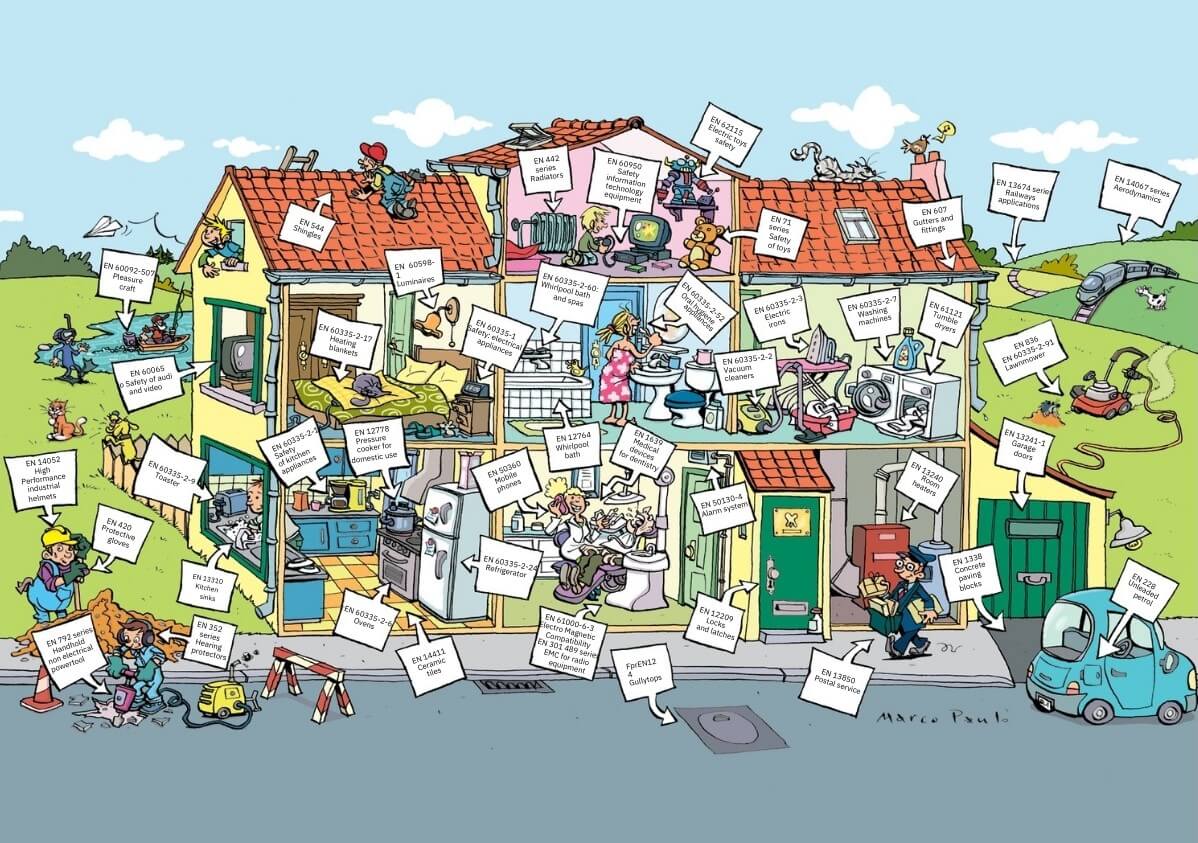“Standardization” is the activity of establishing, with regard to actual or potential problems, provisions for common and repeated use, aimed at the achievement of the optimum degree of order in a given context.
Standardization documents are the result of National, European or International standardization processes. According to ELOT EN 45020, standardization documents may be standards, technical specifications, codes of practice, rules or technical regulations.
According to ELOT EN 45020:
“Standard” is a document, established by consensus and approved by a recognized body, that provides, for common and repeated use, rules, guidelines or characteristics for activities or their results, aimed at the achievement of the optimum degree of order in a given context.
Recognized bodies are the national standardization bodies. Each standard is of voluntary use, except if legislative or other requirements impose their implementation.
“Technical Specification” is a document that prescribes technical requirements to be fulfilled by a product, process or service.
“Code of practice” is a document that describes practices or procedures for the design, manufacture, installation, maintenance or utilization of equipment, structures or products.
“Regulation” is a document providing binding legislative rules that is adopted by an authority.
“Technical Regulation” is a regulation that provides technical requirements, either directly or by referring to or incorporating the content of a standard, technical specification or code of practice.
A technical regulation may be supplemented by technical guidance that outlines some means of compliance with the requirements of the regulation i.e. a deemed-to-satisfy provision.
The first approach for a standard is the technical specification, which is a document that prescribes the characteristics of a product, process or service (e.g. quality, safety, performance or dimensional characteristics). It may include, or refer to, terminology, symbols, testing and control methods, packaging or conformity requirements. Anybody may prepare a technical specification, for contractual purposes, materials procurement, production etc.
The difference between a standard and a technical specification lies in the procedure for the preparation of a standard, as well as its accessibility by people. A national standard (e.g. an ELOT standard) has been prepared under consensus of all interested parties -at national level- and has been approved and issued by a recognized national standardization body (e.g. ELOT). A European standard (EN, ETS etc) has been prepared under consensus of all interested parties -at European level- and has been approved by one of the three European standardization bodies (CEN, CENELEC, ETSI), using the appropriate voting procedure. An international standard (e.g. ISO, IEC) has been prepared under consensus of all interested parties -in international level- and has been approved and issued by one of the two international standardization bodies (ISO, IEC).
The added value of standardization consists of the improvement of the products, processes and services for the intended use, the prevention of technical barriers to trade and facilitation of technological cooperation.
Standards in our everyday life
Standards are everywhere. Most of the time, we don’t even notice them. We may hear talking about a “standard procedure”, a “standard bed” or “standard time”. Through the introduction of the euro in some EU member-states, a new standard currency was established, facilitating the direct communication between national economies in Europe.
A simple example of the meaning of a standard would be the A4 paper size. Today, everybody refers to an A4 paper. But not many people know that the characterization refers, through a standard, to the real dimensions of a sheet of paper. In addition, A4 has become the reference for printers, folders, envelopes, publications, software, etc. No one is forced to follow it, but A4 has certainly become the rule, the reference, the recognized non-written “law”. This simple example indicates how standards make life easier for both consumers and manufacturers while – also very importantly – they do not constrain market development and creativity. A manufacturer with a great new idea may go further with it. If the market and consumers accept it, others will certainly follow the idea, thus giving the opportunity for standards to be developed in that specific field.
